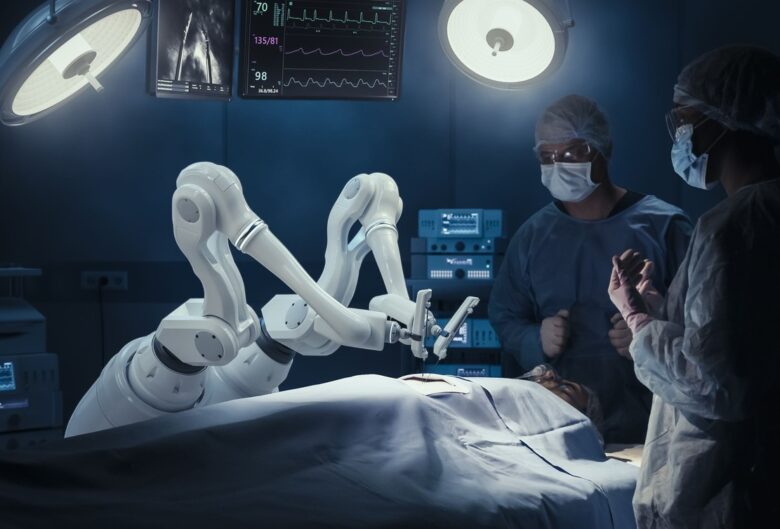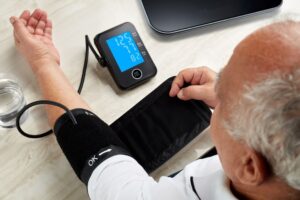The operating room has always been a place of intense concentration, thanks to the steady hands and sharp eyes of highly trained surgeons. But surgical robots are transforming this demanding environment. These powerful technologies don’t replace surgeons; they allow them to fully concentrate on their work, resulting in stunning advances in medical treatments. The advent of robot-assisted surgery is a significant advancement in healthcare. It offers benefits for both patients and surgeons on the operating table. This technology makes treatment safer, more effective, and less invasive for both patients and surgeons. It sets a new standard in surgical care.
Greater Precision:
One of the greatest advantages of surgical robots is their ability to perform procedures with incredible precision. A console allows surgeons to control the robotic arms, while the technology translates their hand movements into smaller, more precise movements within the surgical field. This technology eliminates natural hand tremors, ensuring every incision and suture is performed with perfect stability. This precision is crucial for small, delicate procedures such as those in neurology and urology. It allows surgeons to perform complex surgeries with an unparalleled degree of control, reducing the risk of damage to surrounding tissue and vital structures.
Minimally Invasive Surgery:
Surgical robots excel at performing procedures with minimal trauma. Robotic surgery is typically performed through multiple small incisions, rather than large incisions that can cause significant discomfort and scarring. Sleek robotic instruments are inserted through these incisions to reach the surgical site. This approach significantly reduces physical trauma to the patient. As a result, patients experience less blood loss during surgery, a lower risk of infection, and smaller, less noticeable scars. One of the greatest advantages of robot-assisted surgery for the patient is that it shifts the surgical approach from open to minimally invasive.
Better Visualization:
A high-definition 3D camera allows surgeons to visualize the surgical site during robot-assisted surgery. This provides a clearer view than the naked eye, even during open surgery. This enhanced visibility allows surgeons to observe nerves, arteries, and other vital structures more clearly. This close-up view allows surgeons to operate with greater confidence and safety. It also makes it easier to distinguish healthy from diseased tissue, enabling safer and more thorough complex surgeries.
Shorter Recovery Time:
One of the biggest advantages of robotic surgery for patients is faster recovery and greater comfort. The surgery is less invasive, resulting in less postoperative pain and stress. This often means patients can be discharged from the hospital and back to living at home sooner. Because there is less trauma to the body, patients can also resume their daily activities, such as work and exercise, more quickly than with conventional surgery. A faster return to normal life has a tremendous positive impact on a patient’s overall health and quality of life.
Improving Surgical Skills:
Surgical robots are enabling more possibilities in the operating room. Robotic wrists can move in ways impossible with human wrists, giving surgeons greater dexterity and a wider range of motion. This feature allows doctors to perform complex reconstructions and dissections in small areas of the body that are difficult to reach with conventional surgery. As a result, patients who were previously ineligible for certain minimally invasive surgeries may now be able to undergo them. This technology affords surgeons greater confidence and success in treating more challenging cases.
Conclusion:
The use of surgical robots in modern medicine is a tremendous advancement. This technology is more than just a cool new development of the future; it is a practical and effective tool that improves surgery. It promises less discomfort for patients, fewer scars, and a faster recovery. It offers surgeons unparalleled precision, vision, and control, allowing them to perform optimally. With advances in artificial intelligence and data analytics, robotic systems will become increasingly important in the operating room. This leads us toward a future where surgery is safer and more effective for everyone.
FAQs:
1. Can robots perform surgeries independently?
No, surgical robots do not operate independently. They are highly sophisticated devices that require the full supervision of an experienced surgeon. The surgeon typically sits in the same room as the robotic arms and directs them with a controller. Think of them as an extension of the surgeon’s hands, not a replacement.
2. Is robotic surgery safe?
Yes, robotic surgery is considered very safe and has been used in millions of surgeries worldwide. Like any surgery, robotic surgery carries inherent risks, but the technology is designed to improve safety by increasing surgical precision and reducing invasiveness. Surgeons require extensive training to become proficient in using robotic systems.
3. What types of surgeries can robots perform?
Many different types of physicians use robotic surgery. Urological procedures (such as prostatectomies), gynecological procedures (such as hysterectomies), general surgery (including hernia repairs and cholecystectomies), cardiothoracic surgery, and head and neck surgery are also common. As technology advances, the applications for robotic surgery are increasing.
4. Is robotic surgery pricier than conventional surgery?
The cost of the surgery sometimes reflects the higher initial costs of robotic systems. However, these costs can be offset by patient benefits, such as a shorter hospital stay, fewer complications, and a faster return to work. As with conventional surgery, some insurance companies cover robotic surgery.
5. What is the recovery process like after robotic surgery?
Compared to traditional open surgery, recovery after robotic surgery is generally faster and less painful. Patients typically experience less discomfort, use fewer pain medications, and can return to their normal activities more quickly thanks to smaller incisions. However, the exact recovery period depends on the person and the type of surgery they undergo.




